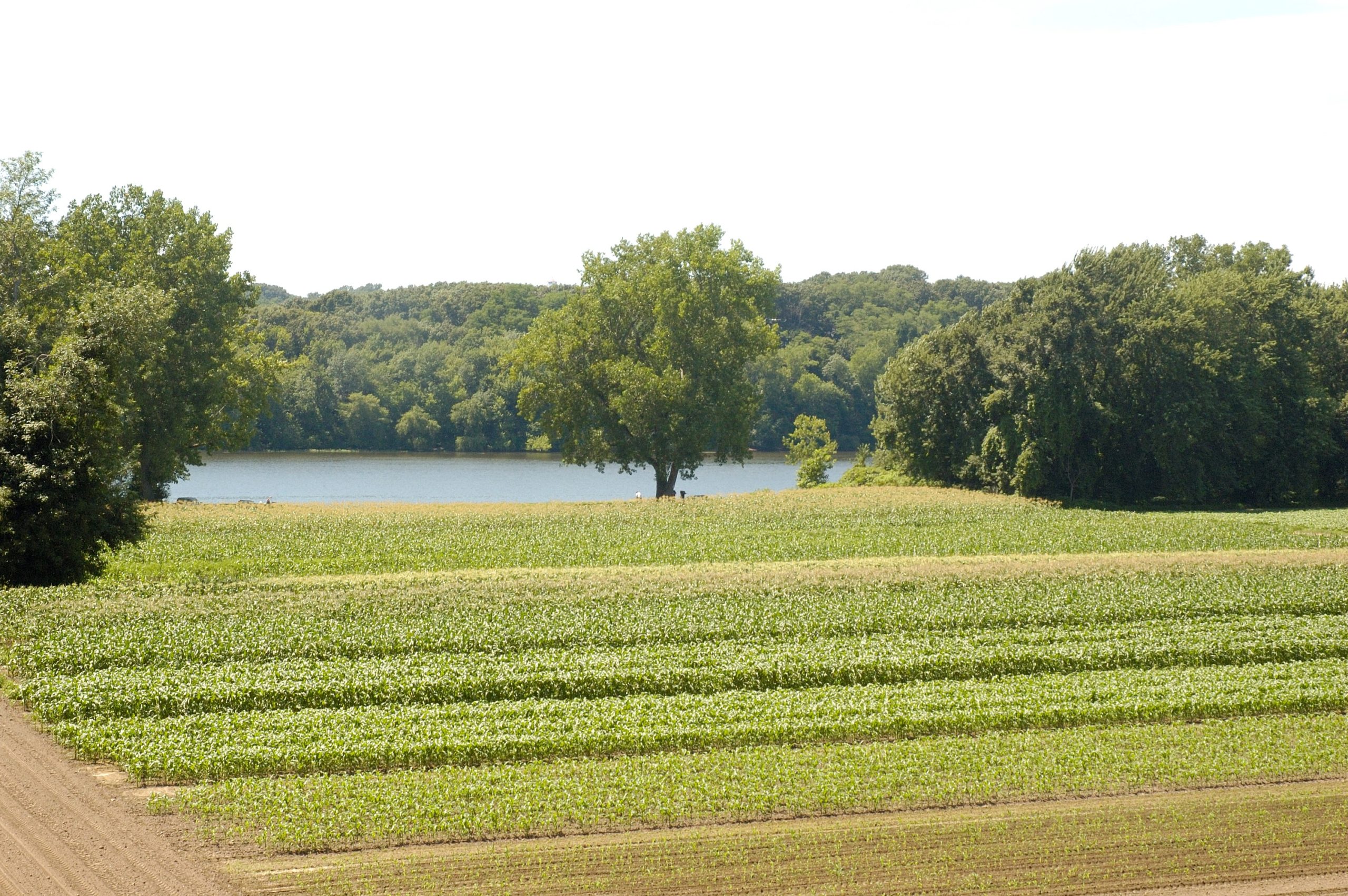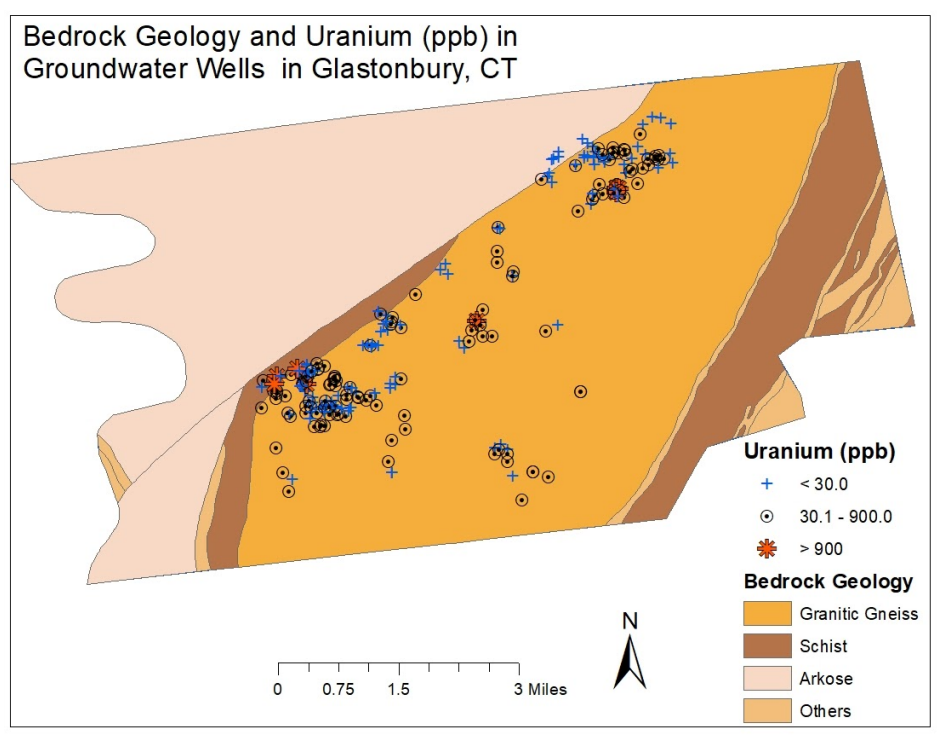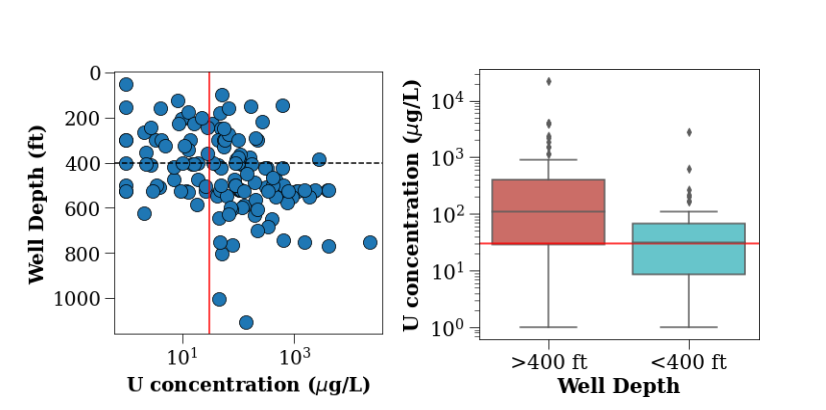When Glastonbury, Connecticut’s health officials and town leadership suspected uranium contamination in residential wells, they partnered with Thriving Earth Exchange to investigate. The project uncovered key information the town needed to advise residents, summed up in a thorough report written with the community in mind – all amid the unprecedented COVID-19 pandemic.
What’s in your water?

Glastonbury, a town in Hartford, Connecticut, is known for its bucolic views. Photo credit: Town of Glastonbury
Glastonbury, a community with a history of agriculture and fruit orchards, is a town of about 35,000 people, and a suburb of the city of Hartford. “We take a lot of pride in being a community that supports good education and quality of life,” said Wendy Mis, Glastonbury’s Director of Health. Many of the town’s residents are also among the 43 million Americans (approximately 15 percent of the U.S. population) who depend on private wells for drinking water.
Town officials first began to suspect a uranium problem in Glastonbury around 2017, when they discovered that a section of the town had elevated uranium concentrations in their water. They worked with homeowners and the public water system which serves that area of town to get public water extended to the neighborhood, but could uranium be present in other areas, too?
“[It was] February 15, 2019, a Friday afternoon. A homeowner walked into my office with a water test result that showed extremely high levels of uranium in a different section of town,” said Mis. “That began our initial investigation. We started neighborhood sampling and soon realized that there was more than just that one neighborhood. We expanded testing for any homeowner with a well to get no-cost testing.” Glastonbury’s health department sprang into action: they distributed water testing kits to residents, coordinated sending the samples to the state lab, interpreted the results in-house, then sent the results to homeowners electronically. 500 people took advantage of the opportunity to test their wells, and the health department found that uranium was occurring in varying levels across the town. But why?
Most of the time, uranium is a threat because it is a toxic heavy metal, like lead or mercury, not because of its radioactivity. Assessing uranium toxicity from ingestion is difficult because there have been few studies on it, but negative impacts on organ function, bone density and birth outcomes have been suggested.
Glastonbury’s town manager, Richard J. Johnson, had learned of Thriving Earth Exchange’s community science program, and initiated a project to explore several questions: What caused the variation in how uranium is concentrated in wells across Glastonbury? How did that map to the town’s geology? And how might that impact residents’ options for getting uranium-safe water?
Johnson, Mis, and sanitarian Don Kendrick connected with Dr. Caitlyn Hall, the Community Science Fellow matched with the Glastonbury team who would help them recruit scientists and facilitate and manage the project. The team quickly established an excellent rapport. “We did a little bit of scoping to learn what their priorities were. We would talk in groups and say ‘does this fit for your timeline? What do you think is missing?’” said Hall. From Thriving Earth’s network of volunteer community scientists, the team brought aboard Dr. Hari Kandel (a geosciences PhD and assistant professor at Lake Superior State University focused on hydrology) and Dr. Rachel Coyte (at the time a grad student, now a postdoctoral scholar at Ohio State University) and the project kicked off in April of 2019.
Understanding the data

Bedrock geology map of town of Glastonbury overlain by recently mapped well water uranium (not all tested wells shown in this diagram). From the report, “Understanding the Prevalence of Uranium in Groundwater Wells in Glastonbury, CT,” June 2021
To find answers, the community needed to know where the uranium was coming from. “We thought the uranium [may be] coming from an old industrial source,” says Hall. However, by looking at water patterns and geology, the team’s scientists determined that granitic bedrock called Glastonbury Gneiss underlying much of the town was linked to naturally occuring uranium concentrations in private wells. “It wasn’t a huge surprise, but the levels we discovered were the shocker for us, said Mis.
The project was unique in that the community had already conducted uranium sampling before it got started, adding up to about 800 points of data. “We worked with our existing files to pull out key information,” said Mis. This was a great benefit to the scientists: “The fact that they had already collected a lot of data was awesome,” said Coyte. “There was an extraordinary amount of it.”
However, just as it was getting started, the project was put to an unprecedented test: the coronavirus outbreak and subsequent COVID-19 pandemic. “This whole thing really had the potential to fall apart because of COVID,” said Mis, who credits Hall’s skill as a project manager in keeping things going. “She found a way to make it work.” Team members stepped away for about six months to take care of themselves, their families, and in Mis and Kendrick’s case, to manage the public health crisis as it unfolded in their community.
Once the project team was back in action and all the data was gathered, Coyte and Kandel got to work: they overlaid samples with high concentrations on a town map and bedrock map to understand the town’s geology and geochemistry.
“The major geologic structure is the fault [under the town],” said Kandel. This fault takes the form of multiple fractures in the Glastonbury Gneiss. “Towards the west part of the fault, there is not much uranium concentration, but towards the east and southern section of the fault, which represent upthrown blocks (meaning the deeper rocks are brought close to the surface), there is high uranium concentration,” he said. Additionally, the Glastonbury Gneiss was folded in some areas, making rock layers incline towards the fault plane, driving water to flow from east to west along those inclined layers and allowing longer interaction between rock and water.

Uranium concentration and well depth. Left: the plotted data from Glastonbury with a red line for a uranium concentration of 30 micrograms per liter and a dotted black line indicating the median well depth from the Glastonbury data (approx. 400 feet). Right: the distribution of measured uranium concentrations in wells less than 400 ft deep and wells greater than 400 ft deep. From the report, “Understanding the Prevalence of Uranium in Groundwater Wells in Glastonbury, CT,” June 2021
The team concluded that “when there was a thin deposit of glacial sediment [on the surface], that is correlated more with a high concentration of uranium,” said Kandel. This thin layer of sediment, called thin till, allows surface water and groundwater to interact, and for dissolved material to travel through rock fractures between the surface and well levels.
The team also found that uranium concentrations could be seasonal. “In the same well, when sampled twice, in one season there would be a really high concentration than others,” said Kandel. This was likely linked to precipitation and the height of the water table. The team also found a positive correlation between the depth of a well and uranium concentration.
In short, Glastonbury has a highly variable geology – interactions between the fractured and folded Glastonbury Gneiss, surficial sedimentary deposits, and how water moves between them is a major challenge to predict. Well depth and the proximity of rock fractures are also complicating factors. As Mis put it, “The report confirmed that your water results may look nothing like your neighbor’s.”
Getting the word out
Once Kandel and Coyte had finished reviewing the data, they drafted an in-depth report that covered the cause of the uranium contamination, Glastonbury’s geology, geochemical influences on groundwater, uranium’s potential health impacts, and options for addressing uranium in drinking water. The report was finalized and published in June 2021 on Glastonbury’s official website.
Making the results accessible was a top priority for the team. “Initially it was a bit of a challenge (to translate the information),” said Kandel. “Till [for example] is a new term for non-geologists.”
“Having other members of the team read the report and say ‘this needs to be changed, this isn’t clear,’ was a crucial part of the process,” said Coyte. “Every member of the team looked over the writing and thought about how it would read to a wider audience.”
They produced a two-page, plain terms summary of the report so community members and town leadership alike could quickly and easily understand the results and what their next steps should be. So far, the reception for the report has been positive: Mis recalled hearing from a community member who commended the team on how accessible it was. Glastonbury will also provide a public presentation on the report to discuss the report’s findings and answer questions.
What to do about Glastonbury’s wells?

Photo credit: Danielle MacInnes, Unsplash
The community wanted to not only understand why uranium was showing up in wells, but to have a clearer picture of what they could do about it. Currently, the town is looking at two options: helping neighborhoods join public utilities or suggesting onsite treatment systems to get uranium out of the water. Previously, “the best we could suggest was that people put a water treatment system on their well,” said Mis. “For people who are remote that’s fine, but we had a population with incredibly high numbers not far from a public water service.”
Joining the public water system comes at a cost, however. The Metropolitan District of Connecticut (MDC) manages public drinking water for multiple communities in the greater Hartford area. Glastonbury residents must cover the cost of extending water lines to their neighborhood, as MDC has an assessment protocol for the extension of water lines in addition to a capital charge for all properties serviced by water lines.
For rural residents with high levels of uranium in their water, private well treatment systems are the only solution. There are two types of treatment systems that can remove uranium, said Kendrick: reverse osmosis and ion exchange. However, these private systems have their own downsides – they can be costly and can potentially contaminate the environment.
“Reverse osmosis for a whole house is extremely expensive and generates a lot of wastewater. For every gallon of treated water, you waste a gallon of water. So, for a home, where the average person uses 50 gallons a day, that’s a huge strain on your well,” said Kendrick.
For ion exchange treatment systems, “if you have very high levels of uranium, you will be using a lot of salt. Units generate backwash, so you have to dispose of that,” said Kendrick. “We’ve only been using these [treatment systems] for two years.” Over time, if salt leaches into the soil, the treatment systems “could create a dead zone – trees probably would not like being near them,” he said.
What does it all mean? Homeowners must factor in their risk, proximity to public water sources and financial considerations in deciding how to address uranium in their water.
Something that makes Glastonbury’s situation different from, for example, finding a contaminant in a municipal water system, is that private wells are not regulated in the same way. “MCL [maximum contaminant level, a standard set by the Environmental Protection Agency for drinking water] is a regulatory number,” said Kendrick. “For an existing home, we can’t do anything about that, but for new construction we require a potability test – I won’t approve a new home with an exceedance [of an MCL]. They have to show that it’s been remediated.”
For established homes with uranium in their wells, the town can provide guidance and educational materials to homeowners, but the decision to act is up to them. Some residents don’t believe remediation is necessary, either because they’ve lived in the community for a long time and have experienced no ill health effects, or because the potential health impacts of uranium are so under-studied. However, Mis and Kendrick noted that increasingly, “banks are making that decision for a lot of people – because they won’t issue loans if it isn’t remediated.”
Reflections: community science, making a difference, and next steps
Everyone agreed that the team’s strong camaraderie made the project special: scientists shared books and resources with Kendrick to help him better understand Glastonbury’s characteristic geology and hydrology, and Coyte connected the community with Wake County, North Carolina, which was also dealing with uranium contamination, to compare notes.
Hall says that for her, the project drove home the importance of using the information available – in this case, Glastonbury residents’ well water samples. “Ultimately, how you work with what you have, to present something that’s meaningful to solve community issues, [is what matters] – you don’t have to spend a lot of money to do something impactful.” Likewise, how that information is presented matters: “Knowing the audience and their concerns is so important to shaping the message.”
Coyte said she found a reward in the practical applications for her area of expertise in geochemistry. “There can be two big frustrations that grad students in my field run into: one, feeling like their research is really divorced from helping people. Two, feeling like you’re pointing out problems all the time. [With community science], you get to be part of the solution,” she said.
So, what will the town of Glastonbury do to help residents address uranium? “We put our staff out there as resources to share whatever knowledge we have. Having the report accessible online helps people ask their own questions. Sometimes we need people to ask a new question, to generate a new answer,” she said. Now, the community has a stronger understanding of how uranium contamination happens – and how to make and keep Glastonbury’s water safe for themselves, their families, and future generations.
